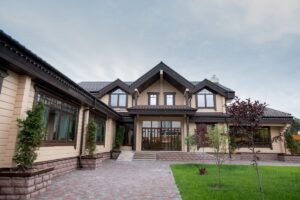Artificial grass has been a popular alternative to natural lawns for years, offering low maintenance and water conservation benefits. However, in some areas, people are beginning to reconsider synthetic turf, and some are even pulling up their fake grass. Why are people choosing to remove artificial grass, and what factors are contributing to this shift? In this blog, we’ll explore the reasons behind this trend and discuss whether artificial turf is still a viable option for homeowners. For more details on the lifespan of artificial grass, visit our guide on Artificial Turf in San Carlos.
Environmental Concerns
One of the primary reasons people are pulling up their artificial grass is due to growing environmental concerns. While synthetic turf can help conserve water by eliminating the need for irrigation, it doesn’t offer the same ecological benefits as natural grass. Natural lawns help absorb carbon dioxide, provide a habitat for wildlife, and improve soil health, none of which artificial grass can replicate.
As awareness of climate change and environmental sustainability grows, some homeowners are opting to return to natural lawns or plant native landscapes that support local ecosystems. This shift is particularly noticeable in areas where the environmental impact of plastic-based products, such as artificial grass, is being more closely scrutinized.
Heat Retention
Artificial grass tends to retain heat, especially in sunny climates like San Carlos. Unlike natural grass, which remains cool to the touch, synthetic turf can become uncomfortably hot during the summer months. In some cases, the surface temperature of artificial grass can reach over 100°F, making it unsuitable for children and pets to play on without cooling measures.
For homeowners who installed artificial grass in areas that receive direct sunlight for most of the day, the heat retention issue can be a significant drawback. While some people use hoses to cool down the surface or install shade structures, these additional efforts can be inconvenient and costly over time. As a result, some homeowners are choosing to pull up their turf and replace it with alternatives that don’t retain as much heat.
Maintenance Misconceptions
While artificial turf is marketed as a low-maintenance alternative to natural grass, it’s not entirely maintenance-free. Over time, debris, leaves, and dirt can accumulate on the surface, requiring regular cleaning. Pet owners, in particular, need to take extra steps to clean up after their pets to prevent odors and bacteria from building up in the turf.
Additionally, the blades of artificial grass can become flattened in high-traffic areas, requiring occasional brushing to maintain the lawn’s appearance. Some homeowners may not have anticipated the level of maintenance required, leading them to remove the turf and opt for more traditional landscaping options.
For those considering how long artificial turf lasts with proper care, visit our page on How long does artificial turf last?.
Drainage and Water Issues
Proper drainage is crucial for artificial turf, and when it’s not installed correctly, water can pool on the surface after rain or heavy use. Standing water can lead to issues such as mold and mildew growth, as well as unpleasant odors. In some cases, homeowners may find that their artificial lawn’s drainage system isn’t performing as expected, leading to persistent water problems.
These drainage issues can be a major frustration, particularly for those who live in areas with occasional heavy rainfall. Fixing a faulty drainage system can be costly, and for some homeowners, it’s easier to remove the turf altogether and replace it with a natural lawn or an alternative landscaping solution.
Cost of Replacement
While artificial grass is designed to last 15 to 25 years, it doesn’t last forever. Over time, the blades can wear down, seams may begin to separate, and the turf may lose its vibrant appearance. When artificial grass reaches the end of its lifespan, replacing it can be a costly process, and some homeowners may decide that returning to natural landscaping is more economical.
The cost of replacing artificial turf includes not only the price of new materials but also labor for removal and reinstallation. For homeowners who initially installed turf to save money on lawn care, the high cost of replacement can be a deciding factor in pulling up their synthetic grass.
Changing Aesthetic Preferences
Another reason people are removing their artificial grass is a change in aesthetic preferences. While artificial turf provides a clean, manicured look, some homeowners are looking for more natural or diverse landscaping options. The uniform appearance of synthetic grass may not suit everyone’s tastes, especially as trends in landscaping move toward eco-friendly and native plant gardens.
By replacing artificial grass with drought-tolerant plants, native grasses, or other sustainable landscaping elements, homeowners can create a more natural-looking yard that requires less maintenance and supports local ecosystems.
Ready to Make the Switch from Artificial Turf?
If you’re reconsidering artificial grass for your property, it’s important to weigh the benefits and drawbacks carefully. While synthetic turf offers low maintenance and water savings, it’s not without its challenges. For some homeowners, the environmental impact, heat retention, and maintenance requirements outweigh the benefits, leading them to remove their turf and explore alternative landscaping solutions.
For more information on the longevity of artificial grass and whether it’s the right choice for your home, visit our page on How long does artificial turf last?. If you’re ready to discuss your options or need help with turf removal, contact us today for a consultation.






